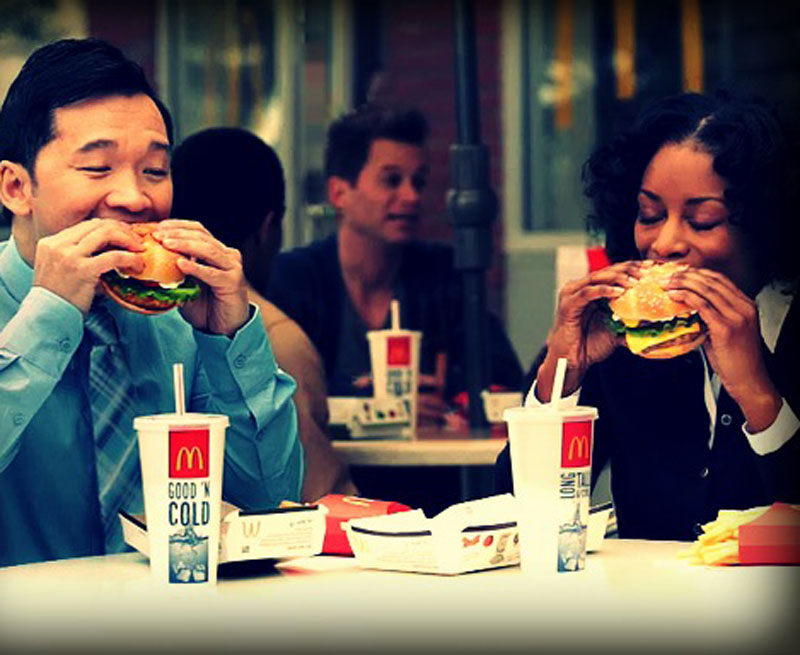Most brands have been on Facebook for years, but a campaign earlier this year helped McDonald’s prove that quick serves can achieve a big return on investment on the popular social-media site.
The fast-food heavyweight saw an increase in sales and guest counts after its campaign, which ran from April 17 to May 29 and encouraged people to take their lunch hour back and enjoy it at McDonald’s. The campaign’s return was up to four times the company’s initial investment.
“We didn't have a precise projection initially. We expected a strong return, and ultimately feel good about the return. It's consistent with what we've seen in this industry and other industries, as well,” says Brian Johnson, sales director at Facebook, who worked closely with McDonald’s on the campaign.
Beyond increasing the bottom line, there were two additional key goals of the campaign, Johnson says: “to drive traffic in particular during the lunch daypart, and also to focus on the premium products—Angus Burgers and premium chicken sandwiches—boosting sales and interest of those products during that daypart, as well as throughout the day and other dayparts.”
McDonald’s developed the campaign around the idea of inspiring people to escape from their desks at lunch and head to its restaurants. Its agency, DDB, believed the tagline “It’s your lunch, take it!” lent itself well to being shared, a crucial component to social media success.
“In today's world, it's not uncommon for people to work hard during their lunch hours,” Johnson says. “[The campaign] was about sparking a conversation in a simple way: through likes and comments on their page posts. As friends started taking this activity, you'd see this momentum that people would go out and take their lunch. It was really about the likes, comments; simple actions that spread virally across Facebook.”
The quick-service brand made its Facebook page the hub of an integrated campaign that also featured TV spots inviting people to visit the page to learn more about taking back lunch. Other components of the campaign included a “Lunch” Facebook tab, which invited people to “Read the Manifesto”—“Today we put an end to the working lunch and start working on eating it at McDonald’s”—and share it with friends.
“It’s a modern version of their former consumer-calling of ‘You Deserve a Break Today,’” says Robin Avni, senior ethnographic analyst at The Hartman Group. “Consumers are looking for a little break from their everyday economic and employment challenges. The messaging works well in tandem with their updated and redecorated venues. The new casual and comfortable atmosphere makes it a reasonable place to get some comfort food and watch the game or check your Facebook page away from the office.”
The campaign, which specifically targeted 18–49-year-olds in the U.S., began with Facebook posts that DDB promoted as ads across the social media site. “All of the posts that had messaging specific to this campaign were promoted,” Johnson says. “There were a variety of different posts that they used. Some were simple photo images, which do extremely well on our platform. Others were questions, as well as video posts that they used.”
A variety of content delivered through an assortment of social-media channels is key to developing consumer relationships, Avni says. “Click-through rates of content-related interactions are currently more successful than ad click-through rates,” she says. “Companies are gaining ground with consumers when they find that magic mix that allows consumers to engage, react, and be a part of the action.”
Facebook examined McDonald’s efforts more closely than it has any previous campaign, says Steve Governale, vertical director of QSR for Facebook. A custom experimental design was used to isolate the impact of Facebook in relation to other McDonald’s media running at the same time. In an effort to determine the correlation between unit sales and exposure to the Facebook ads, markets within different sales regions were experimentally exposed or withheld from Facebook media. All other media, including TV, was the same across these conditions.
“We see across the category a lot of directional evidence around awareness of certain items or meals that [quick serves] are promoting,” Governale says. “It’s the deepest level of research we've done to date to get client-side data to prove out that we drove incremental sales.”
Governale adds that brands should ensure they are directing the right message to the right target audience when running a social-media campaign. “From a creative standpoint, you should be talking about things that resonate with your audience,” he says. “Targeting, overall, is a big one. Our platform is great in targeting the most specific of audiences.”
The most important takeaways from the McDonald’s campaign were that “we successfully drove incremental sales, verified by McDonald’s and their teams,” Johnson says. “To have it verified by the client using their sales data is unique. Second was collaboration and openness. That doesn't happen without a lot of trust, not just between Facebook and McDonald’s, but also their agencies.”









